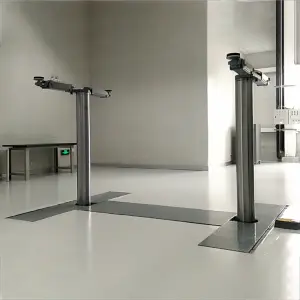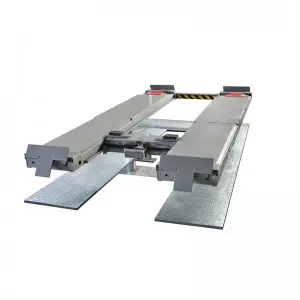****
The cylinder is a fundamental geometric shape that has captured the imagination of mathematicians, engineers, and architects alike. Characterized by its two parallel circular bases connected by a curved surface, the cylinder is a shape that is not only visually striking but also rich in mathematical properties and practical applications. In this article, we will delve into the definition of a cylinder, explore its geometric properties, discuss its applications in various fields, and highlight its importance in everyday life.
Definition and Properties
A cylinder can be defined simply as a three-dimensional shape with two circular bases aligned parallel to each other. The distance between these bases is known as the height (h) of the cylinder, while the radius (r) of the base circles is a crucial dimension that influences many of its properties.
One of the most significant properties of a cylinder is its volume, given by the formula:
\[ V = \pi r^2 h \]
where \( V \) represents the volume, \( \pi \) is a constant (approximately equal to 3.14159), \( r \) is the radius of the base, and \( h \) is the height. This formula highlights how the volume of a cylinder depends both on the area of the circular base and the height.
The surface area of a cylinder is another important property, comprised of both the lateral surface area and the area of the two bases. The formula for the total surface area (A) of a cylinder is:
\[ A = 2\pi r(h + r) \]
This means that the total surface area combines the area of the circular tops and the side surface that wraps around the cylinder.

Understanding the Cylinder: A Comprehensive Exploration of Its Geometric Properties, Applications, and Importance in Various Fields
Applications in Engineering and Architecture
The cylinder’s shape and properties make it an ideal candidate for various applications in both engineering and architecture. In engineering, cylinders are commonly found in the design of pipelines, storage tanks, and hydraulic systems. The ability of cylinders to withstand compressive forces makes them essential components in construction and manufacturing processes.
In architecture, cylinders can be seen in the design of columns, water towers, and various kinds of domes. The cylindrical shape not only offers structural strength but also aesthetic appeal, as seen in iconic structures such as the Roman Pantheon and modern skyscrapers with cylindrical elements.
Role in Manufacturing
In manufacturing, the cylinder is a shape that is frequently utilized in the production of components such as gears, bearings, and pistons. The rotational symmetry of the cylinder allows for precise movements and operations, making it valuable in mechanical systems. For instance, piston cylinders in internal combustion engines are crucial for the conversion of fuel into energy, while bearings often adopt a cylindrical shape to facilitate smooth rotational motion.
Importance in Everyday Life

Understanding the Cylinder: A Comprehensive Exploration of Its Geometric Properties, Applications, and Importance in Various Fields

Understanding the Cylinder: A Comprehensive Exploration of Its Geometric Properties, Applications, and Importance in Various Fields
Beyond the industrial and architectural realms, cylinders are prevalent in everyday life. Common objects such as cans, bottles, and tubes are often designed in the cylindrical shape due to its efficient use of space and the ease with which liquids and gases can be stored and transported. For example, the use of cylindrical containers for beverages not only optimizes the amount of liquid that can be held but also allows for convenient handling and stacking.
Educational Value
From an educational standpoint, teaching students about cylinders forms a critical part of their understanding of geometry. Recognizing the properties of cylinders helps students learn vital mathematical concepts such as volume, surface area, and the relationship between radius and height. Moreover, cylinders serve as an excellent gateway to introducing more complex geometrical shapes, such as cones and spheres.
Conclusion
In summary, the cylinder is a geometrically rich and multifaceted shape with a wide array of applications and importance in both theoretical and practical contexts. From its mathematical properties to its utility in engineering, architecture, and everyday objects, the cylinder stands as a testament to the intersection of geometry and functionality. Understanding the cylinder opens doors to appreciating the intricate designs and structures that populate our world, reinforcing the notion that geometry is not just an abstract study but has significant real-world implications.quick car jack lift
